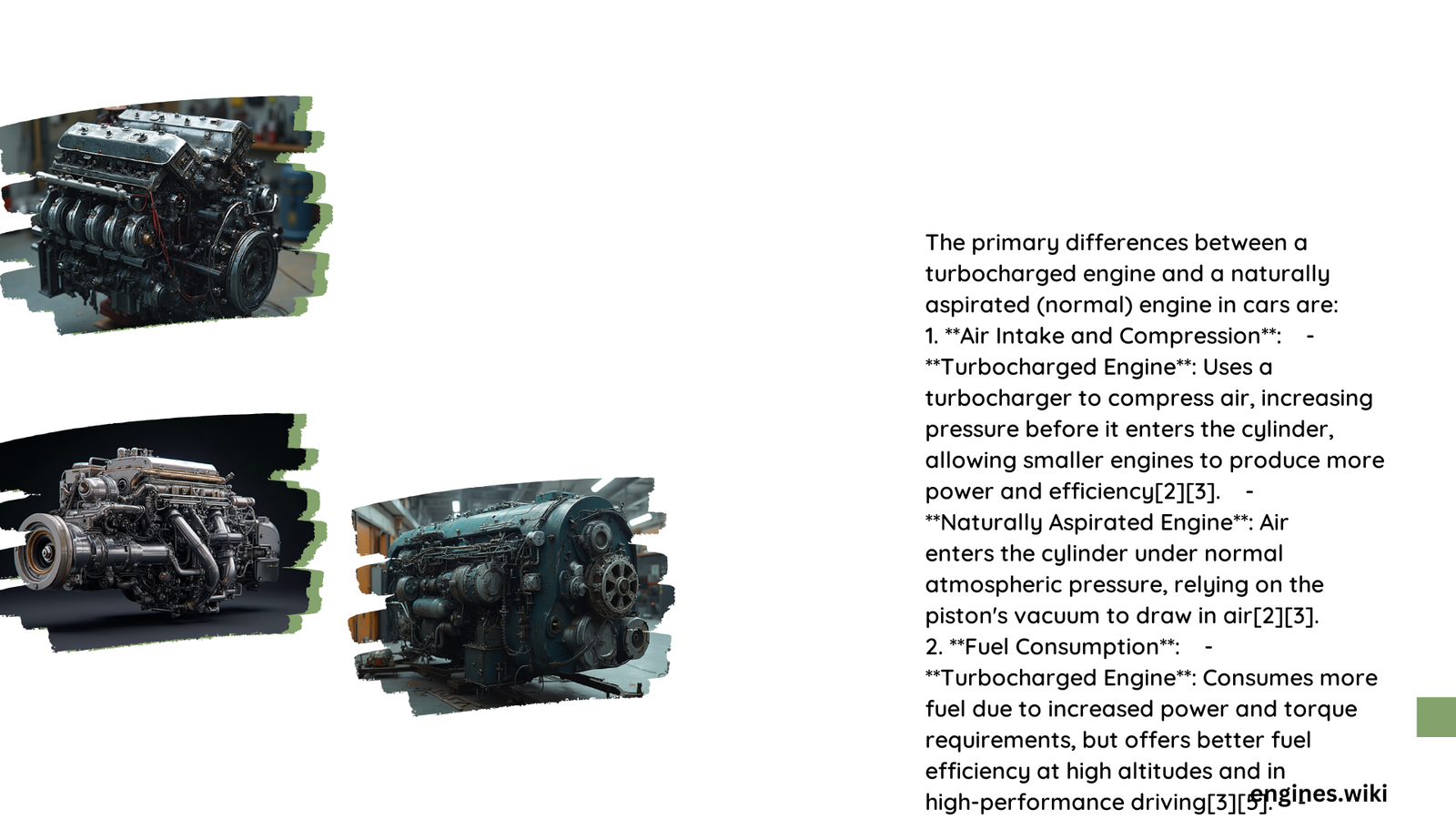Difference Between Turbo Engine and Normal Engine in Cars: A Comprehensive Analysis
Quick Overview of Engine Technologies
Modern automotive engineering presents two primary engine technologies: turbocharged and naturally aspirated engines. These powerplants differ significantly in design, performance, and efficiency. While turbo engines utilize exhaust-driven forced induction to enhance power output, normal engines rely on atmospheric pressure, creating distinct characteristics that impact vehicle performance, fuel economy, and driving experience.
What Makes Turbo Engines Unique?
How Does Turbocharging Work?
A turbocharger is a sophisticated forced induction system that transforms exhaust gases into additional engine power. Here’s how it functions:
- Exhaust Gas Utilization
- Redirects hot exhaust gases through a turbine
- Spins a compressor wheel at high speeds
-
Compresses incoming air, increasing oxygen density
-
Performance Advantages
- Generates more power from smaller engine displacement
- Enables higher horsepower-to-volume ratio
- Provides significant torque at lower RPMs
Mechanical Differences in Turbo Engines
| Component | Turbo Engine Characteristics | Normal Engine Characteristics |
|---|---|---|
| Air Intake | Forced compression | Atmospheric pressure intake |
| Internal Reinforcement | Strengthened components | Standard manufacturing |
| Power Generation | Higher power density | Linear, consistent power |
What Performance Variations Exist?
Power Output Comparison
Turbo Engines:
– Produce 30-50% more power compared to similarly sized naturally aspirated engines
– Generate higher torque at lower RPM ranges
– Offer more dynamic acceleration
Normal Engines:
– Provide consistent, predictable power delivery
– Maintain linear acceleration characteristics
– Less complex mechanical design
How Do Fuel Consumption Patterns Differ?
Efficiency Considerations
Turbo Engine Fuel Dynamics:
– Higher fuel consumption during high-performance driving
– More complex fuel management systems
– Potential for improved efficiency at steady speeds
Normal Engine Fuel Characteristics:
– More consistent fuel economy
– Simpler fuel delivery mechanisms
– Lower operational complexity
What Are the Technological Trade-offs?
Pros and Cons Analysis
Turbo Engines:
– ✅ Higher power output
– ✅ Smaller physical size
– ❌ More complex maintenance
– ❌ Potential turbo lag
Normal Engines:
– ✅ Simpler design
– ✅ Lower maintenance costs
– ✅ Predictable performance
– ❌ Lower power density
Technical Insights for Automotive Enthusiasts
Modern automotive engineering continues evolving, with manufacturers increasingly adopting turbocharged technologies. Advanced engineering techniques like twin-scroll turbochargers and electric turbo systems are reducing traditional limitations such as turbo lag.
Conclusion
The difference between turbo and normal engines represents a fascinating intersection of mechanical engineering, performance optimization, and technological innovation. Each engine type offers unique advantages, catering to diverse driver preferences and automotive applications.

